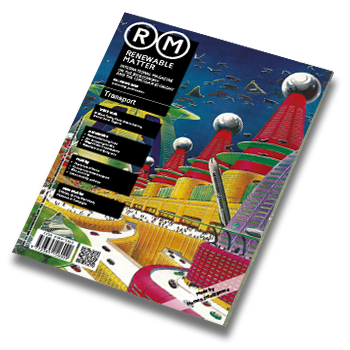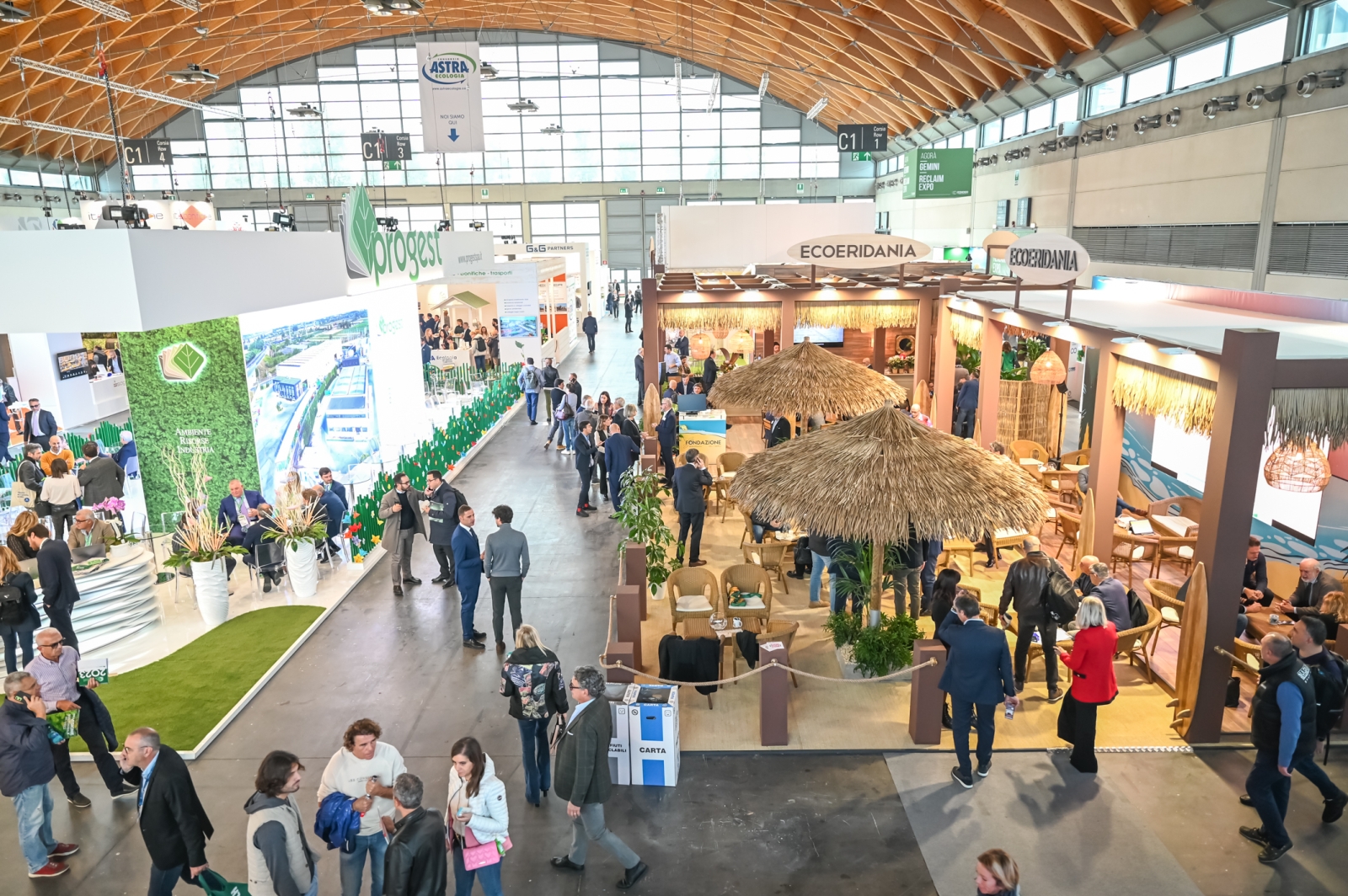The Ministry of Environment and Energy Security will take part in the 26th edition of Ecomondo, a leading international event on green transition policies and solutions for the green and circular economy. The ministry's booth, at Hall South, stand 202, will be home to a busy schedule of meetings and seminars, as well as ad hoc activities for the world of education. To take stock of the many dossiers in charge of the Ministry of Environment and Energy Security, we interviewed Vice-Minister Vannia Gava. Circular economy, energy, and biofuels are the focus of the conversation with the editor-in-chief of Renewable Matter, Emanuele Bompan.
Minister Gava, let's immediately review the most complex dossier: the NRRP. How is it progressing in regard to the circular economy?
We are on schedule. The purpose of the NRRP investment on new waste management facilities and modernization of existing ones, worth 1.5 billion, is to make municipal waste management efficient, raising the national separate collection rate to 65 percent by 2035. The intervention includes the modernization of treatment plants, including paper, glass, organic, and wastewater treatment. About 60 percent of the projects will focus on municipalities in the south of the country to bridge the gap between the north and south.
Then by December 2025, we plan to complete the construction of new waste recycling and treatment plants to reach the national average recycling rate of 55 percent. As early as the end of this year, instead, we will complete the action plan for reducing the number of illegal or irregular landfills. This activity complements that of the Mission Structure of the Extraordinary Commissioner for the cleanup of illegal landfills in infringement proceedings. Finally, as far as the circular economy “Lighthouse Projects” are concerned, the decree with the selection criteria for projects submitted to the Ministry was adopted. These include those for the treatment and recycling of waste from strategic supply chains such as electrical and electronic equipment, photovoltaic panels and wind turbines, those related to the paper and cardboard industry, textiles and plastics.
Besides the projects funded by the NRRP, what remain the government's priorities for the circular economy?
The issue of critical raw materials needed for the development of strategic sectors for the energy transition is relevant: for example electric motors, batteries, accumulators, electrolyzers, wind turbines, chips, photovoltaic panels. The Ministry of Environment has established the “Critical Raw Materials” technical table with the involvement of institutions, research organizations and associations with the aim of identifying supply strategies for these materials. Priority also remains support for the national recycling system, an area in which we are leaders in Europe and for the protection of which we are leading a momentous battle in the EU against the proposed packaging regulation.
Key issues, on which I am personally working, are also the Minimum Environmental Criteria in public procurement and the End of Waste regulation. The latter, which is the result of a synergistic discussion with the sector, represents a historic change of step in the interest of operators and the environment, capable of boosting the circular market in the strategic supply chains of construction, textiles, WEEE, and plastics.
Read also: GLOBAL PLASTICS TREATY: THE SCIENTISTS' RESPONSE TO THE ZERO DRAFT
Are we closing the north-south gap on recycling facilities?
It is among the priorities of this government. On June 30, 2022, we approved the National Waste Management Program, which stipulates that within 18 months of that date all regions must update their management plans, providing for territorial plant self-sufficiency within them. We can no longer allow millions of tons of waste to travel from one part of the country to another. This is not sustainability, it is madness.
What can we expect from the textile recycling supply chain?
This is a relevant sector in terms of environmental impact but also in terms of potential for recycling and the development of the circular economy. It is precisely to combine these needs that a measure is being developed by the Ministry, in consultation with MIMIT (Ministry for Business and Made in Italy), on “extended producer responsibility” (EPR) for textile products and end-of-life management. The measure, which is the subject of consultation with key stakeholders, provides for a consortium management system for waste collection and design criteria to reduce its production and, consequently, its environmental impact from the outset. It is envisioned that recycled materials, textile fibers and natural biocompatible materials will be used in the supply chain, with substances hazardous to humans and the environment eliminated from the production cycle.
Read also: ITALY CAN ASPIRE TO LEADERSHIP IN THE SPACE ECONOMY, BUT INVESTMENT MUST HAPPEN NOW
Italy signed up to the Indian G20 to join the Biofuels Alliance: what kind of investment and ministerial initiatives does this entail?
Italy is among the countries promoting the Global Alliance for Biofuels and is the most advanced state in Europe on this front. The platform was created, precisely, with the aim of promoting synergies on the issue among producers, consumers and interested countries and strengthening the development of automotive, one of the sectors most impacted by decarbonization. In Italy's energy transition trajectory, in fact, the use of biofuels is absolutely strategic, both to decarbonize and to safeguard the country's need for growth. That is why we are committed at the European level to include them in the range of energy solutions useful for the transition. The investments will be calibrated according to the strategy that this government will implement within the framework of the NECP the National Integrated Energy and Climate Plan, in agreement with the other relevant ministries, given the cross-cutting nature of the issue.
You have advocated for a new season of nuclear power in Italy: what kind of investments should be made and in what direction?
Today's situation has changed profoundly, especially in terms of technological development and the level of collective awareness. At this moment in history, when the watchwords are security of supply and energy independence, it would be a mistake not to consider the opportunities arising from the latest generation of nuclear power. Today, modern technologies have achieved very high levels of safety, several orders of magnitude higher than in the past. Small modular nuclear reactors can be available in a shorter time and, unlike conventional power plants, entail less impact, with enormous benefits for the national energy mix and in terms of freeing Italy from its dependence on fossil fuels.
I recall that many countries are moving forward in the development of this technology: to remain behind and then go and source from them would be a short-sighted strategy and would continue to perpetuate the same mistakes from the past. In Italy, research is advancing, we have outstanding achievements such as Enea. The government has set up the National Platform for Sustainable Nuclear Power, which will be the coordinating entity among all the different national players involved in nuclear energy, safety and radiation protection. It aims to focus on the development of technologies with low environmental impact and high safety and sustainability standards.
Read also: SUSTAINABLE NUCLEAR POWER? ITALY WANTS ANOTHER GO AT IT
You were present at the signing of the Biodiversity Agreement in Montreal last December. What initiatives have you set for your term?
At COP15 it was agreed to strengthen policies to protect biodiversity, a 30 percent increase in the percentage of protected areas of lands, oceans and coasts, a reduction of $500 billion annually in environmentally harmful subsidies, and aid to indigenous communities to protect the natural resources on which their livelihoods depend. Italy is walking on these lines.
How important is it to support offshore wind farms in Italy? Where do we stand on simplification for photovoltaics?
The European Union has set out to increase the level of ambition of decarbonization targets at a very difficult time economically, geopolitically and socially, marked by the pandemic crisis, the Russian-Ukrainian conflict, the energy crisis and the Israeli-Palestinian conflict. This scenario requires an effort to be implemented on all fronts, from energy efficiency to increased penetration of renewable
sources. Within this framework, the development of offshore wind power is necessary. The issue of suitable areas is in its discussion phase in a logic of cooperation between state and regions for the identification of installation sites, including maritime spaces. Supporting this impulse to renewable energy sources, the government has accelerated on simplifications. In fact, the recent Decree Law 13/2023 includes a package of measures aimed at accelerating authorization procedures. On this point, the Ministry is strongly committed, but cooperation with territories and administrations at various levels is necessary.
Read also: INNOVATION AND STARTUPS AT ECOMONDO: PRIZES, CONFERENCES, AND JOB OPPORTUNITIES
Our country lacks many skills for green transition in the public administration. What initiatives do you think would be helpful in bridging the employment gap?
The number of college graduates in public administration has grown in the past decade by 23 percent, ISTAT data show, with skills that are mostly legal-administrative, i.e., oriented toward managing procedures rather than by objectives. Today there is a need to shift gears, innovate the level of skills and transform administrative action into result-based activity. In addition, new technical skills need to be developed to support the energy transition.
The government's goal is to build an agile, merit-based public administration. The reform of the SNA, the National School of Public Administration, has made it possible to launch training plans on digitization and new technologies, including through NRRP resources earmarked for this. I would add that, as part of this strategy, the Ministry recently issued a call for applications for the recruitment of nearly 300 technical officers in the strategic subjects of energy and ecological transition. This is a significant investment in human capital to implement the transition in the area of administrative management as well.
This article is also available in Italian / Questo articolo è disponibile anche in italiano
Cover image: Ecomondo
*Article created in collaboration with Ecomondo - Gruppo IEG



